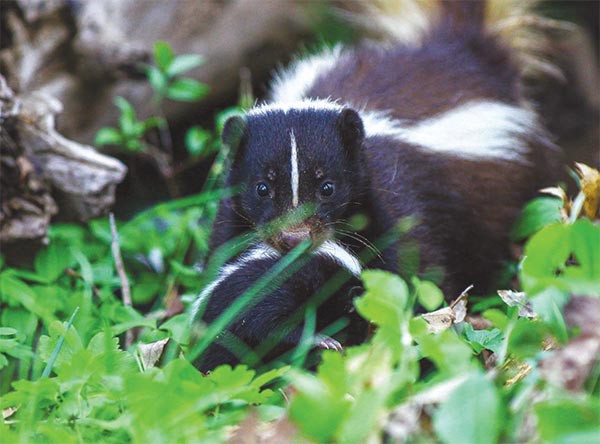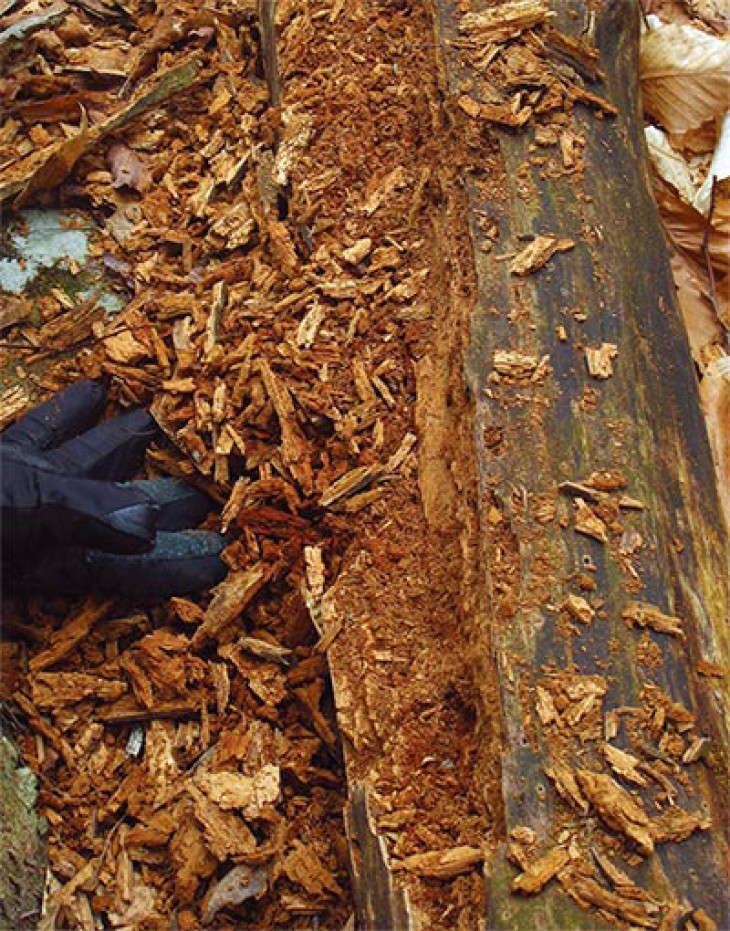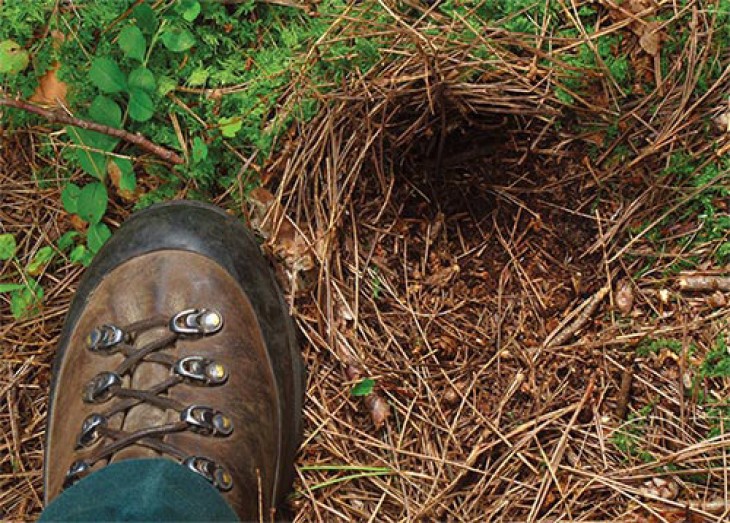A nesting robin was incessantly scolding something that was moving along the length of a downed log. I knelt and studied the area, and soon saw a flash of white, and thereafter the recognizable profile of a striped skunk. A mother skunk was carrying her infant youngster by the nape of the neck just like a kitten. Eyeing me the whole time, she cautiously maneuvered around me and disappeared. I will never forget the look on her face – best described as vigilant, but docile and downright adorable. Unlike the dangerous black bear and moose mothers I have accidentally confronted, she was in no way dangerous or inclined to be aggressive.
People don’t much like skunks, probably because of their capacity to spray us with their malodorous and vile musk. Folks understandably complain about their depredations in the garden, occasional carnage in the chicken coop, as well as their unsightly “digs” in the otherwise manicured lawn. Regarding the latter, however, skunks’ feeding activities are actually quite beneficial to us. Digs are evidence of where skunks have excavated and consumed root-eating grubs, or potentially painful yellow jacket hornets and their larvae.
In the forest, especially in pine needle duff, tiny conical craters called “nose probes” show where a skunk has used its nose to reach into and sniff its dig, searching for invertebrates. If the earth is moist, and the sign is really fresh, you can sometimes discern a smooth nose pad impression inside the probe. Small excavations in rotten logs, and small areas of peeled and rolled sod will indicate the work of a petite animal. Only the tiny paws of a relatively short-legged animal could leave sign that is so diminutive – just inches wide at most. Similarly, the distance that the debris or sod is pulled or rolled toward the animal will be just inches long. By contrast, a bear’s grubbing debris may be thrown back several feet.
The striped skunk boasts a vast, nationwide distribution, and owes this extraordinary success to its dietary penchant for nearly everything. Both nocturnal and crepuscular, a striped skunk is an effective hunter of arthropods, beetles, earthworms, caterpillars, crickets, ants, grasshoppers, bees, hornets – and their larvae. Small rodents, rabbits, birds, carrion, amphibians, snails, crayfish, and even fresh water clams are consumed, as are the eggs of birds and turtles. Larger eggs are deliberately broken by a vigorous backward throwing of the egg between the hind legs, resembling a football player hiking the ball. If the egg strikes a hard surface, the skunk is rewarded with its nutritious contents. Dozens of species’ plant foliage, fruits, and nuts are a mainstay in the skunk’s summer and fall diet. Many species of mushrooms add to the banquet.




